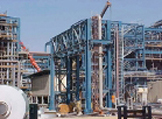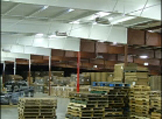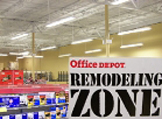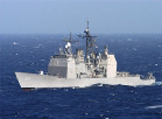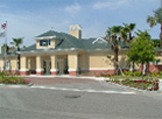Hazardous Communication

Hazardous Communication
1. HAZARD COMMUNICATION POLICYIt is our policy to comply with the requirements of the OSHA Hazard Communication Standard and to develop a hazardous material information and communication system designed to help crewmembers work more safely. All crewmembers must familiarize themselves with the rules and regulations set forth in this manual, and obey all rules as required by federal and state regulations on this matter.
The Foreman is responsible to assure that all provisions of this program are implemented and current. It is his responsibility to compile the hazardous material inventory list, to establish and maintain the Material Safety Data Sheet (MSDS) master file, and to check the job-site for compliance.
Material Safety Data Sheets will be collected from the manufacturers or suppliers of all chemical materials and be reviewed by the Foreman for adequacy and accuracy.
If the manufacturer or supplier fails to send an MSDS, one will be requested. If one is not available from the manufacturer, the product will no longer be used.
If the MSDS is incomplete, the supplier will be contacted and requested to provide additional data for the specific material.
MSDS will be collected, added to the master file and made available through photocopies at the job-site.
MSDS for all materials will be available to crewmembers upon request to the Foreman.
2. IMPLEMENTING THE SYSTEMThe Foreman is responsible to specify that an MSDS is ordered when purchasing materials, inspect incoming materials and checking to be sure that the material being received are on an inventory list. He must be certain that containers are properly labeled and materials are stored safely.
The Foreman for our office, warehouse and each job-site will keep an inventory list of all materials. Copies of the inventory will be maintained at each job-site. New materials that are received are to be added to the inventory. The master inventory list is to be updated every six months, or when new materials arrive.
Prior to starting work at a job site, the Foreman will meet with the customer to discuss the work to be completed, potential safety and material hazards, and appropriate work practices. This meeting will identify materials used in the work place by the customer and any materials our company may use to complete the work.
The Foreman will provide access to the MSDS file by the customer for materials likely to be encountered, and the customer will be asked to provide our company with access to their MSDS file. An agreement will be reached on how our company and the customer will pass this information on to all employees.
3. LEARNING ABOUT HASARDOUS MATERIALSThe Foreman for all our crewmembers will conduct training sessions. It is his responsibility to insure that all our crewmembers on the job site have received hazard communication training.
This training will review the requirements of the OSHA Hazard Communication Standard, operations and work activities where hazardous materials are used at the job site, the location and availability of the Written Hazard Communication Program, the list of hazardous materials, and the collection of MSDS for each work area.
It is the responsibility of each crewmember to learn about the hazards of the material they work with and follow the appropriate safety measures. Questions, concerns and problems are to be directed to their Foreman. No crewmember is permitted to violate the safe work practices outlined on the MSDS.
Knowing that the Foreman has an inventory of hazardous materials MSDS on file and warning labels on the containers can improve our safety, but learning to recognize the hazards on the job and how to protect us is really what this training section is all about.
We share the responsibility for safety and health with our crewmembers, and we also share the training responsibility. We have put together the necessary information, and with this manual have provided you with the know-how to protect yourself. But we can have all the training in the world, and if you don't learn anything or practice what we've learned, the entire system can be a failure.
Take this manual as an example. It contains the important points you need to know. But if you don't take the time to learn them, how will you know when you face a material that is hazardous, or what to do to protect yourself when you use it? Learning, not training, is really what this manual is all about. Be concerned and ask questions.THE SYSTEM DOES WORK!
4. MATERIAL SAFETY DATA SHEETSThe MSDS, is a short technical report that provides you with the known hazards of a specific material. The MSD tells you how to use, handle and store chemicals safely. As you will see, in the explanation of its parts, it has a lot of useful information. Each MSDS may look different, since there is more than one way to write one, but they all give the same basic kinds of information.
IdentityThe first section contains information about the chemical name and manufacturer of a material. An emergency telephone number is provided to aid in emergency treatment or spill involving the material. The trade names and the chemical identification of the material, CAS number (an identifier designated by Chemical Abstract Services), or a structural formula are stated.
Hazardous IngredientsThis section lists all the hazardous ingredients and how much of them are present in the material, along with the Threshold Limit Value (TLV), a measure of the toxicity of the material. Not all the categories will list information. Where the information is not applicable "NA" will appear.
Physical/Chemical CharacteristicsDetailed information on the materials is provided here, which will help you identify the material by observing its appearance and odor. Other technical data is provided to help you control your exposure.
Fire and ExplosionSpecial fire protection information is in this section. The Flash Point or temperature at which the material gives off vapor that will burn is important. This section also tells you how to extinguish fires and includes any special fire fighting procedures.
ReactivityThis section identifies reactive materials. It tells you what conditions to avoid and what other materials must be kept away from this material to assure safety. Health Hazard
Health concerns are covered here, including the TLV the effects of overexposure, and where in the body the health effects occur. Some of the effects listed will only apply to very high doses of the material. Emergency and first aid information will provide methods for treating overexposure.
Safe Handling and UseCovered in this part are special handling precautions. Knowing the hazard is good, but here you are told the precautions to take when using the material, how to store it safely, and methods for cleaning up spills. Special instructions on waste disposal are also given.
Control MeasuresThis section is very important in protecting yourself from the physical and health effects of the material. Usually, if adequate ventilation is available, respiratory protection is not needed. Using the correct type of gloves, clothing, eye protection, respirator or other special protective equipment, should prevent overexposure.
5. READ LABELS AND WARNINGSContainer labels are the first and easiest place to look to see if the material you are using is hazardous. Labels are like a road sign when you are driving. They can tell you quickly what you need to do to protect yourself. For a more detailed map, you need to look at the MSDS.
Many of us, however, have a bad habit. We don't read the labels. Because almost everything we buy for our handiwork or cleaning jobs at home has warnings and we've never had a problem, we've developed the "it won't happen to me" or "I know how" attitude.
This is how injuries happen. The wrong materials are mixed together or used the wrong way and before we know it, there's a problem.
There are many different types of labels used by manufacturers to warn you of the dangers of a material. All of these labels will tell you the name of the material, who makes or sells it, and give a hazard warning that tells what part of your body can be affected. Many companies are now putting nearly all of the MSDS information onto the label so you may be able to find fire and first aid information, as well as how to protect yourself when handling and storing a material. Handling spills and how to dispose of empty containers may also be covered.
If a container is not labeled on a job site, it probably should be. Also torn or damaged labels need to be replaced. Work with your Foreman to help keep the cans and drums labeled.
If labels cannot be easily affixed to the container, tags, signs, or other written materials will be used to label containers. The labels will be legible, prominently displayed and in English. The labels will contain the name of the material, a description of the hazard, and any warnings, which may be appropriate. A supply of labels will be kept by the Foreman and will be issued when requested
The HMIS label system from the National Paint and Coatings Association (NPCA) is acceptable for use and is recommended. This system is a modification of the National Fire Protection Association diamond labeling system, and may be used as long as the appropriate hazard warnings and the name of the material are added. If this system is used, all crewmembers must be made aware of the code system.
6. CHEMICAL HAZARDSYou probably don't think of the supplies and materials you use in your work as chemicals, but they are. Some won't hurt you at all, while others are very dangerous.
The point of this booklet isn't to make you a chemist, but it will help you understand the hazards. First of all, there are four major hazard classes. To make these easy to remember, we used the word FACTOR, which stands for:
Flammable - And - Corrosive - Toxic - Or - Reactive
These four hazard classes can cause two types of problems, physical and health.
When we talk about the physical hazards of chemicals, we are not concerned with how the chemical affects your body, but with how a reaction could occur, and then how this reaction could cause you harm. Physical damage can happen with flammables and reactives when they undergo a chemical reaction. They can easily cause damage and injury because they can burn and explode. The toxic gases that are given off can be an even greater worry.
7. HEALTH HAZARDSHealth hazards are not as easy to understand. All materials can cause health problems under the wrong conditions, so we need to understand that even materials which are flammables or reactive can be toxic or poisonous.
Corrosive and Toxic materials act directly on the body. Corrosives, such as acids can damage the eyes, skin and lungs on contact. Toxic materials enter the body through our lungs as we breathe, our mouths as we eat, and even right through the skin. Your body will react quickly when you are exposed to some materials, while other reactions don't happen right away and may affect you later over a very long period of time. Often, no injury occurs directly at the location that the toxic material is absorbed, but the poison is moved by the bloodstream to a body organ system or other part where the effect occurs.
Call Now - 1.800.354.9165 - Toll Free

